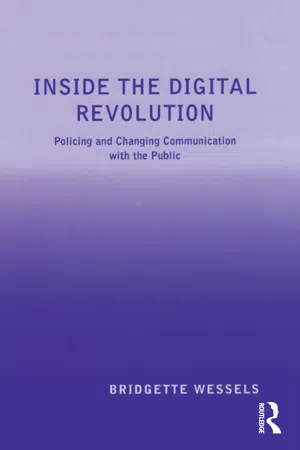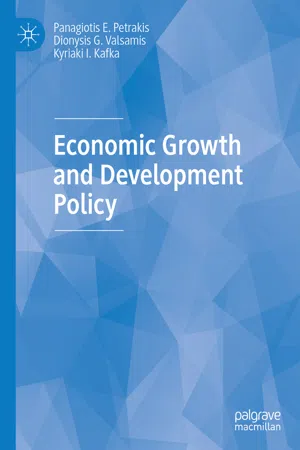Social Sciences
Cultural Change
Cultural change refers to the transformation of a society's beliefs, values, customs, and traditions over time. It can be driven by various factors such as technological advancements, globalization, migration, and social movements. Cultural change is a dynamic process that shapes the way people interact, communicate, and express themselves within a society.
Written by Perlego with AI-assistance
Related key terms
5 Key excerpts on "Cultural Change"
- eBook - ePub
The Sociology of Education
An Introduction
- Ivor Morrish(Author)
- 2019(Publication Date)
- Routledge(Publisher)
Chapter 4 Social Change and EducationA. Some Facts and Theories of Social Change
In the popular mind everything that changes within society constitutes 'social change', from variations in the patterns of fashion to movements in population and general scientific advance. Some thinkers would distinguish, ab initio, at least three types of change, thereby giving to 'social change' itself a greater degree of speciality. There is, for example, civilizational change which involves the more physical elements in society, such as its inventions, its technology and science, and its improved forms of communication. There is cultural change which is concerned with the changes in knowledge, in ritual and religion, in artefacts and in art forms such as painting, architecture, dancing, drama and literature. Social change is then limited to social relationships and their balance or equilibrium. This analysis of change undoubtedly has certain advantages: it gives a seemingly clear-cut reference to a specific type of change, and this makes the investigation of its 'properties' a little more scientific.But, admirable as such an idea may seem at first sight, the more one considers social change, the relationships between people, their equilibrium and disequilibrium, the more one becomes involved in the change and vicissitudes of civilization and culture. The web of social relationships which we call society is reticulated and intersected by every technical invention, every vagary in fashion or art form, every new technique of birth control, and every increase of efficiency in the means of production or social control. Life is one, and the change experienced in social relationships is both cause and effect. Max Weber recognized this complex nature of social relationships, and the concomitance of social, civilizational and Cultural Change (1) . The problems associated with causation are considerable, and David Hume pointed out a long time ago the difficulty of the whole philosophical concept; he preferred to speak in terms of the 'constant conjunction' of certain events, and of their contiguity and succession rather than of a rigid, however undemonstrable, causation (2) - eBook - ePub
Inside the Digital Revolution
Policing and Changing Communication with the Public
- Bridgette Wessels(Author)
- 2016(Publication Date)
- Routledge(Publisher)
… technology is humanised nature [which] is to insist that it is a fundamentally social phenomenon: it is a social construction of nature around us and within us, and once achieved, it expresses an embedded social vision, and it engages us in what Marx would call a form of life. The interpenetration of culture and nature here described is, in short, of the sort that Mauss (1967) would readily call total: any behaviour that is also, political, social and symbolic. It has a legal dimension, it has a history, it entails a set of social relationships and it has meaning – Pfaffenberger 1988, 244.This conceptualization encompasses the social relations of the formation of technologies, which in so doing, for example, embeds communication within the social, political and cultural dynamics of digitally-mediated communication. Understanding the complexity of this link requires understanding the ways in which cultural forms are envisaged and materialize within the social drama of innovation. This provides a framework for the social relations and cultural dimensions of technology, and the characteristics of the interaction of technology with social forms and systems of meaning to create new technological forms. The processes within these frameworks are especially relevant because the characteristic action within innovation is that of ‘performance’ where social, political and cultural values are constantly ‘in play’ in relation to material and technological artefacts and the conventions of communication. The actual performance of the innovation enacts out – dramatises – the complex links between human culture and technological forms.If the understanding is that technological change is interdependent with social and institutional change, then the meaningfulness of that change is realized through Cultural Change. Chaney (1993 ) argues that Cultural Change refers to differences in the way that social projects are discursively understood in particular historical contexts. Part of Cultural Change involves understanding the way in which change is contested and represented. One particular approach to Cultural Change takes a dramatist frame of reference (Burke 1989 - eBook - ePub
- Panagiotis E. Petrakis, Dionysis G. Valsamis, Kyriaki I. Kafka(Authors)
- 2020(Publication Date)
- Palgrave Macmillan(Publisher)
When individuals are faced with conditions and behaviours that differ from those which they consider acceptable, on the basis of their own cultural background, they follow a process that may be called cultural eclecticism, in which they accept and adopt certain behaviours, reject others and partially adopt yet others. The importance of Cultural Changes is not always the same, as change may occur, for example, because the adoption of a behaviour is considered necessary for human survival or, in other cases, for meeting certain social needs. It should also be emphasized that Cultural Change is usually cumulative, in the sense that after each change, much is added and little is lost. At the same time, changes in the cultural background usually lead to the need for new changes that will complement or supplement the original change.Through globalization, different cultures interact with each other as a number of processes such as commercial transactions and the migration of populations. The development of technology has also contributed to this. As the process of globalization is unavoidable for both developed and developing economies , it is interesting to note the ways in which societies and individuals adapt to change.Two conflicting schools of thought have emerged regarding the impact of globalization. The first school of thought, based on modernization theory3 claims that globalization contributes to the convergence of differences between cultural backgrounds, as political and social forces lead to a change in values. The second school emphasizes the stability and endurance of traditional values against economic and political changes occurring under the influence of globalization. The resistance of traditional values to change comes from the fact that these values are independent of economic change (DiMaggio, 1994 ). In the process of globalization, a set of values is formed, based on common characteristics between different societies, which interact with local cultures, and ultimately lead to a cultural transformation with high cohesion among cultural backgrounds (Hermans & Kempen, 1998 - eBook - ePub
Cultural Anthropology
Global Forces, Local Lives
- Jack David Eller(Author)
- 2020(Publication Date)
- Routledge(Publisher)
As we have acknowledged, culture change is inevitable in situations of culture contact, which has been the normal condition of human societies as long as there have been human societies. Even without that contact, individuals or groups continuously modify their cultures. Environmental changes may call for new behavioral adaptations over the short or long term. Innovations introduce new material, and reinterpretations shift the meaning of previous material. The mere passing of generations brings new individuals with new perspectives on their “traditions.” In all of these ways, culture change is normal and natural. Cultures are always “in process.”Even in situations of culture contact, the changes induced are often unplanned, spontaneous, and uncoordinated. People observe this or that, transfer this or that, accept or modify or reject this or that in the normal course of cultural development without any specific goals in mind and without anybody dominating or driving the process. However, sometimes this change is not spontaneous and voluntary at all, and more and more in the modern world, such change is highly planned and even highly coercive.Let us define directed change, then, as planned, coordinated, and sustained efforts to make changes to part or all of a culture. There are two directions from which this initiative may come. In one case, changes are imposed “from the outside,” by a foreign society that is aiming to change the culture of another society for the benefit of the former (and occasionally, at least the perception of the benefit of the latter). In the other case, changes are imposed “from the inside,” by one element (class, religion, race, ethnic group, etc.) or region (e.g. urban versus rural, north versus south) of a society on another element or region of the same society. This distinction can be a little blurred, however, since in practice, “on the ground,” it might not be quite clear when a group or society is “inside” or “outside.” This too can be relative. When the United States wanted to attract settlers into the Oklahoma territory in the nineteenth century, this could be regarded as promoting changes inside American society and territory or as imposing changes on non-American, namely, Indian societies - eBook - ePub
The New Evolutionary Paradigm
Keynote Volume
- Ervin Laszlo(Author)
- 2019(Publication Date)
- Routledge(Publisher)
Once we look for the more peaceful, more sexually egalitarian, and generally less hierarchic social configuration characteristic of societies that orient to a partnership, rather than a dominator, model of social organization, we also observe the patterns characterizing an ancient civilization like Minoan Crete recurring in some of today’s technologically developed societies. A notable example is Sweden, where in a nation that has not been at war for over a century we see a strong movement toward both sexual equality and generally egalitarian social structure.Moreover, as we begin to look at the full span of our cultural evolution from the dual perspective here proposed, we see the operation of two major processes or dynamics. One is the unidirectional movement toward greater technological, and thus social, complexity. The other is the multidirectional movement between periods primarily orienting either to a partnership or dominator model of social organization as “at-tractors” for all social systems.The interaction of these two movements is the basis for the new conceptual map of cultural evolution sketched briefly in this paper, beginning with a fresh look at the major technological phase changes.Creativity, Technology, and Phase Changes in Cultural Evolution
A striking aspect of the evolutionary process is the movement to ever greater levels of complexity, offering progressively more flexibility and choice. But with the emergence of the human species, choice takes on a wholly unprecedented dimension. It becomes not only the ability to select among given realities but the capacity to create new realities.In the context of cultural evolution, human creativity can be perhaps most accurately defined in the Biblical sense of creation. It is the capacity, first, to image new realities, and beyond that, to actualize these images through technology. Our most taken for granted realities are the actualization of ideas once entertained in the minds of women and men. This is true of such everyday artifacts as pots, tables, rugs, and clothes, and of more complex inventions such as machines, steamships, missiles, and computers. It is also true of the social inventions that everywhere surround us, our schools, hospitals, and stock exchanges, as well as the complex of economic, educational, governmental, religious, and scientific institutions that so profoundly affect every aspect of our lives.
Learn about this page
Index pages curate the most relevant extracts from our library of academic textbooks. They’ve been created using an in-house natural language model (NLM), each adding context and meaning to key research topics.




